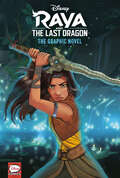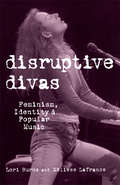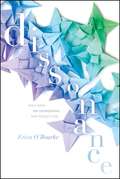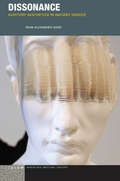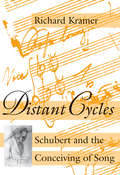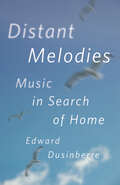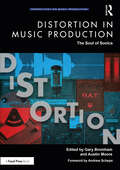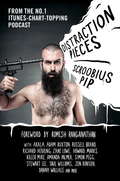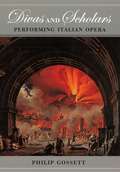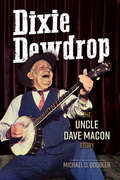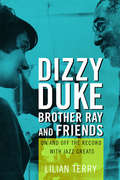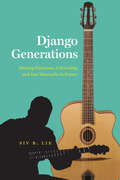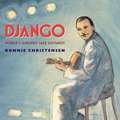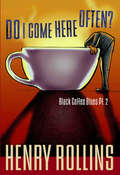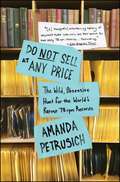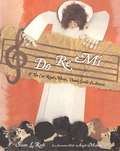- Table View
- List View
Disney Raya and the Last Dragon: The Graphic Novel (Graphic Novel)
by RH DisneyThis hardcover full-color graphic novel retells the whole exciting story of the hit Disney animated film Raya and the Last Dragon!Experience the magic of the fantasy-action-adventure Raya and the Last Dragon, exploring themes of community and hope, and inspired by the beautiful and diverse cultures of Southeast Asia. This hardcover graphic novel retells the whole exciting story with full-color illustrations. It is perfect for boys and girls ages 8 to 12! Walt Disney Animation Studios' Raya and the Last Dragon introduces Raya, a lone warrior from the fantasy kingdom of Kumandra who teams up with a crew of misfits in her quest to find the last dragon and bring light and unity back to their world. Awkwafina lends her voice to Sisu, the last dragon, who was left on Kumandra in case dark forces return to the world, and Kelly Marie Tran voices the lead character, Raya.
Disney Theatrical Productions: Producing Broadway Musicals the Disney Way
by Amy S. OsatinskiDisney Theatrical Productions: Producing Broadway Musicals the Disney Way is the first work of scholarship to comprehensively examine the history and production practices of Disney Theatrical Productions (DTP), the theatrical producing arm of the studio branch of the Walt Disney Corporation. This book uncovers how DTP has forged a new model for producing large-scale musicals on Broadway by functioning as an independent theatrical producer under the umbrella of a large entertainment corporation. Case studies of three productions (The Lion King, Tarzan, and Newsies) demonstrate the flexibility and ingenuity of DTP, and showcase the various production models that the company has employed over the years. Exploring topics such as the history of DTP, its impact on the revitalization of Times Square, and its ability to open up a new audience base for Broadway theatre, this volume examines the impact that DTP has had on American musicals, both domestically and internationally, and how its accomplishments have helped reshape the Broadway landscape. This book is relevant to students in Musical Theatre, History of Musical Theatre, Theatre History, and Arts Management courses, along with general Disney enthusiasts.
Disraeli the Novelist (Routledge Library Editions: The Nineteenth-Century Novel #3)
by Thom BraunFirst published in 1981, this book attempts to approach a better understanding of Disraeli the man through his life as a novelist. It is not a series of literary criticisms, rather an attempt to see how ‘fiction’ and the act of ‘fictionalising’ played an important part in Disraeli’s life. The author discusses how Disraeli’s novels in terms of how they reflected various stages of his life and development while assuming no knowledge of the, now mostly out-of-print, books on the part of the reader. This book fills the gap between the standard and comprehensive political biographies and the few literary analyses that appeared the twenty years prior to its publication.
Disruptive Divas: Feminism, Identity and Popular Music (Studies In Contemporary Music And Culture Ser.)
by Lori Burns Melisse LafranceDisruptive Divas focuses on four female musicians: Tori Amos, Courtney Love, Me'Shell Ndegéocello and P. J. Harvey who have marked contemporary popular culture in unexpected ways have impelled and disturbed the boundaries of "acceptable" female musicianship.
Dissonance
by Erica O'RourkeIn this inventive romantic thriller, Del has the power to navigate between alternate realities—and the power to save multiple worlds.<P> Delancey knows for sure that there is more than one universe. Many more. Because every time someone makes a choice, a new, parallel world is spun off the existing one. Eating breakfast or skipping it, turning left instead of right, sneaking out instead of staying in bed—all of these choices create alternate universes in which echo selves take the roads not traveled. Del knows all of this because she’s a Walker, someone who can navigate between the worlds, and whose job is to keep the dimensions in harmony.<P> But Del’s decisions have consequences too. Even though she’s forbidden from Walking after a training session goes horribly wrong, she secretly starts to investigate other dissonant worlds. She’s particularly intrigued by the echo versions of Simon Lane, a guy who won’t give her the time of day in the main world, but whose alternate selves are uniquely interested. But falling for Simon draws Del closer to a truth that the Council of Walkers is trying to hide—a secret that threatens the fate of the entire multiverse.
Dissonance
by Erica O'RourkeIn this inventive romantic thriller, Del has the power to navigate between alternate realities--and the power to save multiple worlds.Every time someone makes a choice, a new, parallel world is spun off the existing one. Eating breakfast or skipping it, turning left instead of right, sneaking out instead of staying in bed--all of these choices create alternate universes in which echo selves take the roads not traveled. Del knows this because she's a Walker, someone who can navigate between the worlds, and whose job is to keep the dimensions in harmony.But Del's decisions have consequences too. Even though she's forbidden from Walking after a training session goes horribly wrong, she secretly starts to investigate other dissonant worlds. She's particularly intrigued by the echo versions of Simon Lane, a guy who won't give her the time of day in the main world, but whose alternate selves are uniquely interested. But falling for Simon draws Del closer to a truth that the Council of Walkers is trying to hide--a secret that threatens the fate of the entire multiverse."O'Rourke brilliantly builds an intricate and complex alternate science-fiction universe that contains beautiful imagery and visualization. A definite page-turner." --School Library Journal
Dissonance: Auditory Aesthetics in Ancient Greece (Idiom: Inventing Writing Theory)
by Sean Alexander GurdIn the four centuries leading up to the death of Euripides, Greek singers, poets, and theorists delved deeply into auditory experience. They charted its capacity to develop topologies distinct from those of the other senses; contemplated its use as a communicator of information; calculated its power to express and cause extreme emotion. They made sound too, artfully and self-consciously creating songs and poems that reveled in sonorousness. Dissonance reveals the commonalities between ancient Greek auditory art and the concerns of contemporary sound studies, avant-garde music, and aesthetics, making the argument that “classical” Greek song and drama were, in fact, an early European avant-garde, a proto-exploration of the aesthetics of noise. The book thus develops an alternative to that romantic ideal which sees antiquity as a frozen and silent world.
Distant Cycles: Schubert and the Conceiving of Song
by Richard KramerFranz Schubert's song cycles Schone Mullerin and Winterreise are cornerstones of the genre. But as Richard Kramer argues in this book, Schubert envisioned many other songs as components of cyclical arrangements that were never published as such. By carefully studying Schubert's original manuscripts, Kramer recovers some of these "distant cycles" and accounts for idiosyncrasies in the songs which other analyses have failed to explain. Returning the songs to their original keys, Kramer reveals linkages among songs which were often obscured as Schubert readied his compositions for publication. His analysis thus conveys even familiar songs in fresh contexts that will affect performance, interpretation, and criticism. After addressing problems of multiple settings and revisions, Kramer presents a series of briefs for the reconfiguring of sets of songs to poems by Goethe, Rellstab, and Heine. He deconstructs Winterreise, using its convoluted origins to illuminate its textual contradictions. Finally, Kramer scrutinizes settings from the Abendrote cycle (on poems by Friedrich Schlegel) for signs of cyclic process. Probing the farthest reaches of Schubert's engagement with the poetics of lieder, Distant Cycles exposes tensions between Schubert the composer and Schubert the merchant-entrepreneur.
Distant Cycles: Schubert and the Conceiving of Song
by Richard KramerFranz Schubert's song cycles Schone Mullerin and Winterreise are cornerstones of the genre. But as Richard Kramer argues in this book, Schubert envisioned many other songs as components of cyclical arrangements that were never published as such. By carefully studying Schubert's original manuscripts, Kramer recovers some of these "distant cycles" and accounts for idiosyncrasies in the songs which other analyses have failed to explain. Returning the songs to their original keys, Kramer reveals linkages among songs which were often obscured as Schubert readied his compositions for publication. His analysis thus conveys even familiar songs in fresh contexts that will affect performance, interpretation, and criticism. After addressing problems of multiple settings and revisions, Kramer presents a series of briefs for the reconfiguring of sets of songs to poems by Goethe, Rellstab, and Heine. He deconstructs Winterreise, using its convoluted origins to illuminate its textual contradictions. Finally, Kramer scrutinizes settings from the Abendrote cycle (on poems by Friedrich Schlegel) for signs of cyclic process. Probing the farthest reaches of Schubert's engagement with the poetics of lieder, Distant Cycles exposes tensions between Schubert the composer and Schubert the merchant-entrepreneur.
Distant Melodies: Music in Search of Home
by Edward DusinberreAn engaging blend of memoir and music history, Distant Melodies explores the changing ideas of home, displacement, and return through the lives and chamber music of four composers. How does music played and heard over many years inform one’s sense of home? Writing during the COVID-19 pandemic, when travel is forbidden and distance felt anew, Edward Dusinberre, first violinist of the world-renowned Takács Quartet, searches for answers in the music of composers whose relationships to home shaped the pursuit of their craft—Antonín Dvořák, Edward Elgar, Béla Bartók, and Benjamin Britten. Dusinberre has lived abroad for three decades. At the age of 21, he left his native England to pursue music studies at the Juilliard School in New York. Three years later he moved to Boulder, Colorado. Drawn to the stories of Dvořák’s, Bartók’s, and Britten’s American sojourns as they tried to reconcile their new surroundings with nostalgia for their homelands, Dusinberre reflects on his own evolving relationship to England and the idea of home. As he visits and imagines some of the places crucial to these composers’ creative inspiration, Dusinberre also reflects on Elgar’s unusual Piano Quintet and the landscapes that inspired it. Combining travel writing with revealing insights into the working lives of string quartet musicians, Distant Melodies is a moving and humorous meditation on the relationship between music and home.
Distant Melodies: Music in Search of Home
by Edward DusinberreAn engaging blend of memoir and music history, Distant Melodies explores the changing ideas of home, displacement, and return through the lives and chamber music of four composers. How does music played and heard over many years inform one’s sense of home? Writing during the COVID-19 pandemic, when travel is forbidden and distance felt anew, Edward Dusinberre, first violinist of the world-renowned Takács Quartet, searches for answers in the music of composers whose relationships to home shaped the pursuit of their craft—Antonín Dvořák, Edward Elgar, Béla Bartók, and Benjamin Britten. Dusinberre has lived abroad for three decades. At the age of 21, he left his native England to pursue music studies at the Juilliard School in New York. Three years later he moved to Boulder, Colorado. Drawn to the stories of Dvořák’s, Bartók’s, and Britten’s American sojourns as they tried to reconcile their new surroundings with nostalgia for their homelands, Dusinberre reflects on his own evolving relationship to England and the idea of home. As he visits and imagines some of the places crucial to these composers’ creative inspiration, Dusinberre also reflects on Elgar’s unusual Piano Quintet and the landscapes that inspired it. Combining travel writing with revealing insights into the working lives of string quartet musicians, Distant Melodies is a moving and humorous meditation on the relationship between music and home.
Distortion in Music Production: The Soul of Sonics (Perspectives on Music Production)
by Gary Bromham Austin MooreDistortion in Music Production offers a range of valuable perspectives on how engineers and producers use distortion and colouration as production tools. Readers are provided with detailed and informed considerations on the use of non-linear signal processing, by authors working in a wide array of academic, creative, and professional contexts. Including comprehensive coverage of the process, as well as historical perspectives and future innovations, this book features interviews and contributions from academics and industry practitioners. Distortion in Music Production also explores ways in which music producers can implement the process in their work and how the effect can be used and abused through examination from technical, practical, and musicological perspectives. This text is one of the first to offer an extensive investigation of distortion in music production and constitutes essential reading for students and practitioners working in music production.
Distraction Pieces
by Scroobius PipThe Times Bestseller (Non-Fiction)Join Scroobius Pip as he gets to the bottom of what matters most in life: whether getting Russell Brand to expound on capitalism, Jon Ronson on the perils of social media, Simon Pegg on the power of satire, Killer Mike on race relations in the United States or Howard Marks on drugs and cancer, Pip elicits thought-provoking material by rummaging through the minds of some of the most interesting creatives of our time. Distraction Pieces features both curated highlights from the iTunes-chart-topping podcast - from Akala to Howard Marks via the likes of Adam Buxton, Romesh Ranganathan and Amanda Palmer - and exclusive new content, with chapters on politics, social media, music, comedy and more. Featuring illustrations by tattoo artist mr heggie, this is a must-have for fans of the Distraction Pieces podcast, and a must-read for anyone interested in the creative mind.
Distributed Free Improvisation: A Cultural Affective-Semiotic Perspective on Creativity (Palgrave Studies in Creativity and Culture)
by Diogo MonzoThis book presents a new model to visualize and understand the creative process in free improvisation: the Interactive Dimensions of the Creative Flow (IDCF). Drawing on theoretical work on distributed creativity and the author&’s background as a professional pianist, this short monograph establishes provocative dialogues between the field of music and the cultural psychology of semiotic dynamics to investigate human interactions involved in the act of creating. New empirical data and literature research on improvisation are used to discuss the historical and sociocultural factors behind collective and collaborative processes. In this context, the Distributed Free Improvisation Model offers a new theoretical and methodological innovation to the study of musical improvisation, which is presented as the result of a musical practice that develops in a community, in sociocultural contexts, through multiple interactions from which the senses and meanings of what is produced emerge. An inspiring read for students, professionals, and researchers in the field of cultural psychology, music improvisation, and creativity studies, this book opens new pathways to the study of creative processes and affective semiosis.
Divas and Scholars: Performing Italian Opera
by Philip GossettWinner of the 2007 Otto Kinkeldey Award from the American Musicological Society and the 2007 Deems Taylor Award from the American Society of Composers, Authors, and Publishers.Divas and Scholars is a dazzling and beguiling account of how opera comes to the stage, filled with Philip Gossett’s personal experiences of triumphant—and even failed—performances and suffused with his towering and tonic passion for music. Writing as a fan, a musician, and a scholar, Gossett, the world's leading authority on the performance of Italian opera, brings colorfully to life the problems, and occasionally the scandals, that attend the production of some of our most favorite operas. Gossett begins by tracing the social history of nineteenth-century Italian theaters in order to explain the nature of the musical scores from which performers have long worked. He then illuminates the often hidden but crucial negotiations opera scholars and opera conductors and performers: What does it mean to talk about performing from a critical edition? How does one determine what music to perform when multiple versions of an opera exist? What are the implications of omitting passages from an opera in a performance? In addition to vexing questions such as these, Gossett also tackles issues of ornamentation and transposition in vocal style, the matters of translation and adaptation, and even aspects of stage direction and set design. Throughout this extensive and passionate work, Gossett enlivens his history with reports from his own experiences with major opera companies at venues ranging from the Metropolitan and Santa Fe operas to the Rossini Opera Festival at Pesaro. The result is a book that will enthrall both aficionados of Italian opera and newcomers seeking a reliable introduction to it—in all its incomparable grandeur and timeless allure.
Divas in the Convent: Nuns, Music, and Defiance in Seventeenth-Century Italy
by Craig A. MonsonWhen eight-year-old Lucrezia Orsina Vizzana (1590OCo1662) entered one of the preeminent convents in Bologna in 1598, she had no idea what cloistered life had in store for her. Thanks to clandestine instruction from a local "maestro di cappella"OCoand despite the church hierarchyOCOs vehement opposition to all convent musicOCoVizzana became the star of the convent, composing works so thoroughly modern and expressive that a recent critic described them as OC historical treasures. OCO But at the very moment when VizzanaOCOs works appeared in 1623OCoshe would be the only Bolognese nun ever to publish her musicOCoextraordinary troubles beset her and her fellow nuns, as episcopal authorities arrived to investigate anonymous allegations of sisterly improprieties with male members of their order. aaaaaaaaaaa Craig A. Monson retells the story of Vizzana and the nuns of Santa Cristina to elucidate the role that music played in the lives of these cloistered women. Gifted singers, instrumentalists, and composers, these nuns used music not only to forge links with the community beyond convent walls, but also to challenge and circumvent ecclesiastical authority. Monson explains how the sisters of Santa CristinaOCorefusing to accept what the church hierarchy called GodOCOs will and what the nuns perceived as a besmirching of their honorOCofought back with words and music, and when these proved futile, with bricks, roof tiles, and stones. These women defied one Bolognese archbishop after another, cardinals in Rome, and even the pope himself, until threats of excommunication and abandonment by their families brought them to their knees twenty-five years later. By then, Santa CristinaOCOs imaginative but frail composer literally had been driven mad by the conflict. aaaaaaaaaaa MonsonOCOs fascinating narrative relies heavily on the words of its various protagonists, on both sides of the cloister wall, who emerge vividly as imaginative, independent-minded, and not always sympathetic figures. In restoring the musically gifted Lucrezia Orsina Vizzana to history, Monson introduces readers to the full range of captivating characters who played their parts in seventeenth-century convent life. a
Dixie Dewdrop: The Uncle Dave Macon Story (Music in American Life)
by Michael D. DoublerOne of the earliest performers on WSM in Nashville, Uncle Dave Macon became the Grand Ole Opry's first superstar. His old-time music and energetic stage shows made him a national sensation and fueled a thirty-year run as one of America's most beloved entertainers. Michael D. Doubler tells the amazing story of the Dixie Dewdrop, a country music icon. Born in 1870, David Harrison Macon learned the banjo from musicians passing through his parents' Nashville hotel. After playing local shows in Middle Tennessee for decades, a big break led Macon to Vaudeville, the earliest of his two hundred-plus recordings and eventually to national stardom. Uncle Dave--clad in his trademark plug hat and gates-ajar collar--soon became the face of the Opry itself with his spirited singing, humor, and array of banjo picking styles. For the rest of his life, he defied age to tour and record prolifically, manage his business affairs, mentor up-and-comers like David "Stringbean" Akeman, and play with the Delmore Brothers, Roy Acuff, and Bill Monroe.
Dixie Lullaby
by Mark KempRock & roll has transformed American culture more profoundly than any other art form. During the 1960s, it defined a generation of young people as political and social idealists, helped end the Vietnam War, and ushered in the sexual revolution. In Dixie Lullaby, veteran music journalist Mark Kemp shows that rock also renewed the identity of a generation of white southerners who came of age in the decade after segregation -- the heyday of disco, Jimmy Carter, and Saturday Night Live. Growing up in North Carolina in the 1970s, Kemp experienced pain, confusion, and shame as a result of the South's residual civil rights battles. His elementary school was integrated in 1968, the year Kemp reached third grade; his aunts, uncles, and grandparents held outdated racist views that were typical of the time; his parents, however, believed blacks should be extended the same treatment as whites, but also counseled their children to respect their elder relatives. "I loved the land that surrounded me but hated the history that haunted that land," Kemp writes. When rock music, specifically southern rock, entered his life, he began to see a new way to identify himself, beyond the legacy of racism and stereotypes of southern small-mindedness that had marked his early childhood. Well into adulthood Kemp struggled with the self-loathing familiar to many white southerners. But the seeds of forgiveness were planted in adolescence when he first heard Duane Allman and Ronnie Van Zant pour their feelings into their songs. In the tradition of music historians such as Nick Tosches and Peter Guralnick, Kemp masterfully blends into his narrative the stories of southern rock bands --from heavy hitters such as the Allman Brothers Band, Lynyrd Skynyrd, and R.E.M. to influential but less-known groups such as Drive-By Truckers -- as well as the personal experiences of their fans. In dozens of interviews, he charts the course of southern rock & roll. Before civil rights, the popular music of the South was a small, often racially integrated world, but after Martin Luther King Jr.'s assassination, black musicians struck out on their own. Their white counterparts were left to their own devices, and thus southern rock was born: a mix of popular southern styles that arose when predominantly white rockers combined rural folk, country, and rockabilly with the blues and jazz of African-American culture. This down-home, flannel-wearing, ass-kicking brand of rock took the nation by storm in the 1970s. The music gave southern kids who emulated these musicians a newfound voice. Kemp and his peers now had something they could be proud of: southern rock united them and gave them a new identity that went beyond outside perceptions of the South as one big racist backwater. Kemp offers a lyrical, thought-provoking, searingly intimate, and utterly original journey through the South of the 1960s, '70s, '80s, and '90s, viewed through the prism of rock & roll. With brilliant insight, he reveals the curative and unifying impact of rock on southerners who came of age under its influence in the chaotic years following desegregation. Dixie Lullaby fairly resonates with redemption.
Dixie Lullaby: A Story of Music, Race, and New Beginnings in a New South
by Mark KempRock & roll has transformed American culture more profoundly than any other art form. During the 1960s, it defined a generation of young people as political and social idealists, helped end the Vietnam War, and ushered in the sexual revolution. In Dixie Lullaby,veteran music journalist Mark Kemp shows that rock also renewed the identity of a generation of white southerners who came of age in the decade after segregation- the heyday of disco, Jimmy Carter, and Saturday Night Live. Growing up in North Carolina in the 1970s, Kemp experienced pain, confusion, and shame as a result of the South's residual civil rights battles. His elementary school was integrated in 1968, the year Kemp reached third grade; his aunts, uncles, and grandparents held outdated racist views that were typical of the time; his parents, however, believed blacks should be extended the same treatment as whites, but also counseled their children to respect their elder relatives. "I loved the land that surrounded me but hated the history that haunted that land," Kemp writes. When rock music, specifically southern rock, entered his life, he began to see a new way to identify himself, beyond the legacy of racism and stereotypes of southern small-mindedness that had marked his early childhood. Well into adulthood Kemp struggled with the self-loathing familiar to many white southerners. But the seeds of forgiveness were planted in adolescence when he first heard Duane Allman and Ronnie Van Zant pour their feelings into their songs. In the tradition of music historians such as Nick Tosches and Peter Guralnick, Kemp masterfully blends into his narrative the stories of southern rock bands- from heavy hitters such as the Allman Brothers Band, Lynyrd Skynyrd, and R.E.M. to influential but less-known groups such as Drive-By Truckers- as well as the personal experiences of their fans. In dozens of interviews, he charts the course of southern rock & roll. Before civil rights, the popular music of the South was a small, often racially integrated world, but after Martin Luther King Jr. 's assassination, black musicians struck out on their own. Their white counterparts were left to their own devices, and thus southern rock was born: a mix of popular southern styles that arose when predominantly white rockers combined rural folk, country, and rockabilly with the blues and jazz of African-American culture. This down-home, flannel-wearing, ass-kicking brand of rock took the nation by storm in the 1970s. The music gave southern kids who emulated these musicians a newfound voice. Kemp and his peers now had something they could be proud of: southern rock united them and gave them a new identity that went beyond outside perceptions of the South as one big racist backwater. Kemp offers a lyrical, thought-provoking, searingly intimate, and utterly original journey through the South of the 1960s, '70s, '80s, and '90s, viewed through the prism of rock & roll. With brilliant insight, he reveals the curative and unifying impact of rock on southerners who came of age under its influence in the chaotic years following desegregation. Dixie Lullaby fairly resonates with redemption.
Dizzy, Duke, Brother Ray, and Friends: On and Off the Record with Jazz Greats
by Lillian TerryLilian Terry has lived music. As a performer, she has shared the stage with Ella Fitzgerald and Nina Simone. She cofounded the European Jazz Federation and pioneered jazz education in Italy. Her work as a director-producer of radio and television programs have spread the music by introducing countless people to its legendary performers. Drawing on Terry's long friendships and professional associations, Dizzy, Duke, Brother Ray, and Friends offers readers a rare opportunity to hear intimate conversations with some of the world's greatest musical figures. Dizzy Gillespie offers his thoughts on playing with œsanctified rhythm and the all-important personal touch in performance. Duke Ellington discourses on jazz history and concludes an interview to sing a self-written ditty in Italian. Ray Charles gives candid thoughts on race and politics while taking charge of Terry's tape recorder. Abbey Lincoln, Max Roach, Horace Silver, Bill Evans ”all provide Terry and her readers with unforgettable encounters. The result is a collection of profiles, some stretching over a decade or more, that reveal these performers in ways that illuminates their humanity and expands our appreciation of their art.
Django Generations: Hearing Ethnorace, Citizenship, and Jazz Manouche in France (Chicago Studies in Ethnomusicology)
by Siv B. LieDjango Generations shows how relationships between racial identities, jazz, and national belonging become entangled in France. Jazz manouche—a genre known best for its energetic, guitar-centric swing tunes—is among France’s most celebrated musical practices of the twentieth and twenty-first centuries. It centers on the recorded work of famed guitarist Django Reinhardt and is named for the ethnoracial subgroup of Romanies (also known, often pejoratively, as “Gypsies”) to which Reinhardt belonged. French Manouches are publicly lauded as bearers of this jazz tradition, and many take pleasure and pride in the practice while at the same time facing pervasive discrimination. Jazz manouche uncovers a contradiction at the heart of France’s assimilationist republican ideals: the music is portrayed as quintessentially French even as Manouches themselves endure treatment as racial others. In this book, Siv B. Lie explores how this music is used to construct divergent ethnoracial and national identities in a context where discussions of race are otherwise censured. Weaving together ethnographic and historical analysis, Lie shows that jazz manouche becomes a source of profound ambivalence as it generates ethnoracial difference and socioeconomic exclusion. As the first full-length ethnographic study of French jazz to be published in English, this book enriches anthropological, ethnomusicological, and historical scholarship on global jazz, race and ethnicity, and citizenship while showing how music can be an important but insufficient tool in struggles for racial and economic justice.
Django: World's Greatest Jazz Guitarist
by Bonnie Christensen"When I think about the best guitar players ever, the first name that comes to mind is Django Reinhardt. No one has ever equaled his sound or techniques." - Willie Nelson<P><P> Born into extreme poverty in a gypsy encampment, Django Reinhardt (1910-1953) overcame tremendous obstacles, including a debilitating injury, to become the world's most acclaimed jazz guitarist.<P> Here, Bonnie Christensen tells his story with a haunting, rhythmic, jazz-inflected text and lush oil paintings that capture the spirit of both the man and his music.<P> Jazz Americain, [scanner's note this is cain not just can] jazz like Django--moving bending changing blending<P> Try that rhythm, stretch that measure, syncopation.<P> Twist that line.<P> Winner of the Schneider Family Book Award
Do I Come Here Often?
by Henry RollinsDo I Come Here Often? includes interviews with Jerry Lee Lewis and Isaac Hayes, articles on Roky Erickson and David Lee Roth and Rollins' 1991 Lollapalooza tour journals and features illustrations by Shannon Wheeler ("Too Much Coffee Man").
Do Not Sell At Any Price
by Amanda PetrusichThe untold story of a quirky and important subculture: The world of 78rpm records and the insular community that celebrates them--by acclaimed music critic and author Amanda Petrusich, who contributes regularly to Pitchfork, The Oxford American, and The New York Times.Before MP3s, CDs, and cassette tapes, even before LPs or 45s, the world listened to music on 78rpm records--those fragile, 10-inch shellac discs. While vinyl records have enjoyed a renaissance in recent years, good 78s are exponentially harder to come by and play. A recent eBay auction for the only known copy of a particular record topped out at $37,100. Do Not Sell at Any Price explores the rarified world of the 78rpm record--from the format's heyday to its near extinction--and how collectors and archivists are working frantically to preserve the music before it's lost forever. Through fascinating historical research and beguiling visits with the most prominent 78 preservers, Amanda Petrusich offers both a singular glimpse of the world of 78 collecting and the lost backwoods blues artists whose 78s from the 1920s and 1930s have yet to be found or heard by modern ears. We follow the author's descent into the oddball fraternity of collectors--including adventures with Joe Bussard, Chris King, John Tefteller, Pete Whelan, and more--who create and follow their own rules, vocabulary, and economics and explore the elemental genres of blues, folk, jazz, and gospel that gave seed to the rock, pop, country, and hip-hop we hear today. From Thomas Edison to Jack White, Do Not Sell at Any Price is an untold, intriguing story of preservation, loss, obsession, art, and the evolution of the recording formats that have changed the ways we listen to (and create) music.
Do Re Mi
by Susan L. Roth Angelo MafucciIf you can read musical notes, you can sing any song or play any piece. But musical notes have not always been here. Long ago, songs were memorized. If songs were forgotten, they were lost forever. Thanks to one man, Guido d’Arezzo, music now can last forever.
